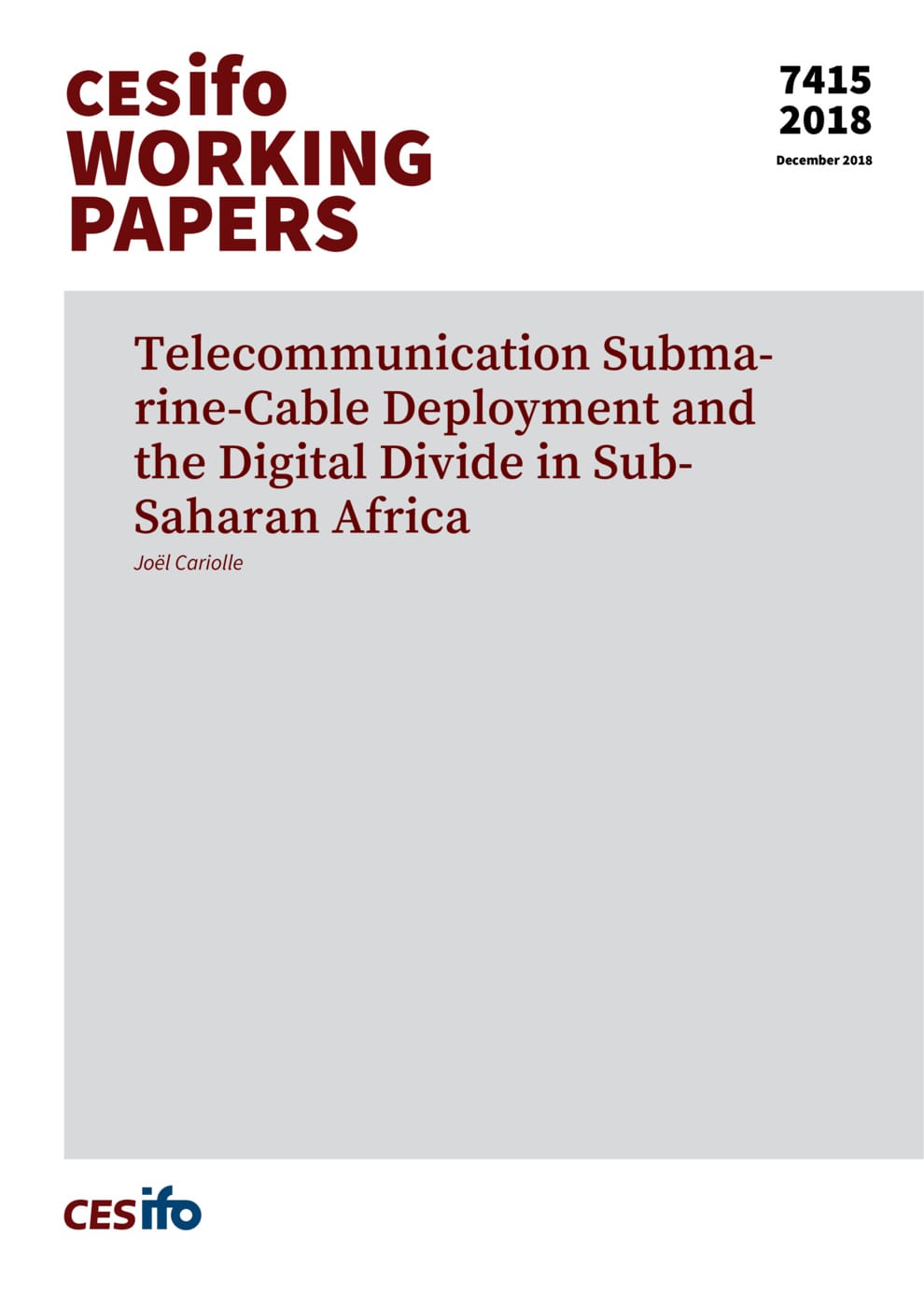Telecommunication Submarine-Cable Deployment and the Digital Divide in Sub-Saharan Africa
CESifo, Munich, 2018
CESifo Working Paper No. 7415

The recent deployment of fibre-optic submarine cables (SMCs) in sub-Saharan Africa (SSA) raised the prospects for the digital economy expansion and the whole sub-continent take-off, but also exposed countries and populations to new sources of vulnerability. This paper provides empirical evidence on the ambivalent effect of SMC deployment on the digital divide in 46 SSA countries. On the one hand, results show that the laying of SEACOM, MainOne and EASSy cables in 2009-2010 has yielded a three percentage points increase in internet penetration rates. This is a huge increase, meaning that the deployment of these cables has almost doubled the penetration of Internet in the sub-continent’s population. On the other hand, exogenous sources of telecommunication disruptions related to SMC laying – the country’s exposure to SMC outages and digital isolation – are found to reduce internet and mobile penetration rates, to lower investments in ICTs, and to increase mobile-cellular tariffs and the wireline network instability. Therefore, while SMC arrival in SSA has reduced the digital divide, this divide would be lower if SSA countries were less digitally vulnerable.
Economics of Digitization
Industrial Organisation